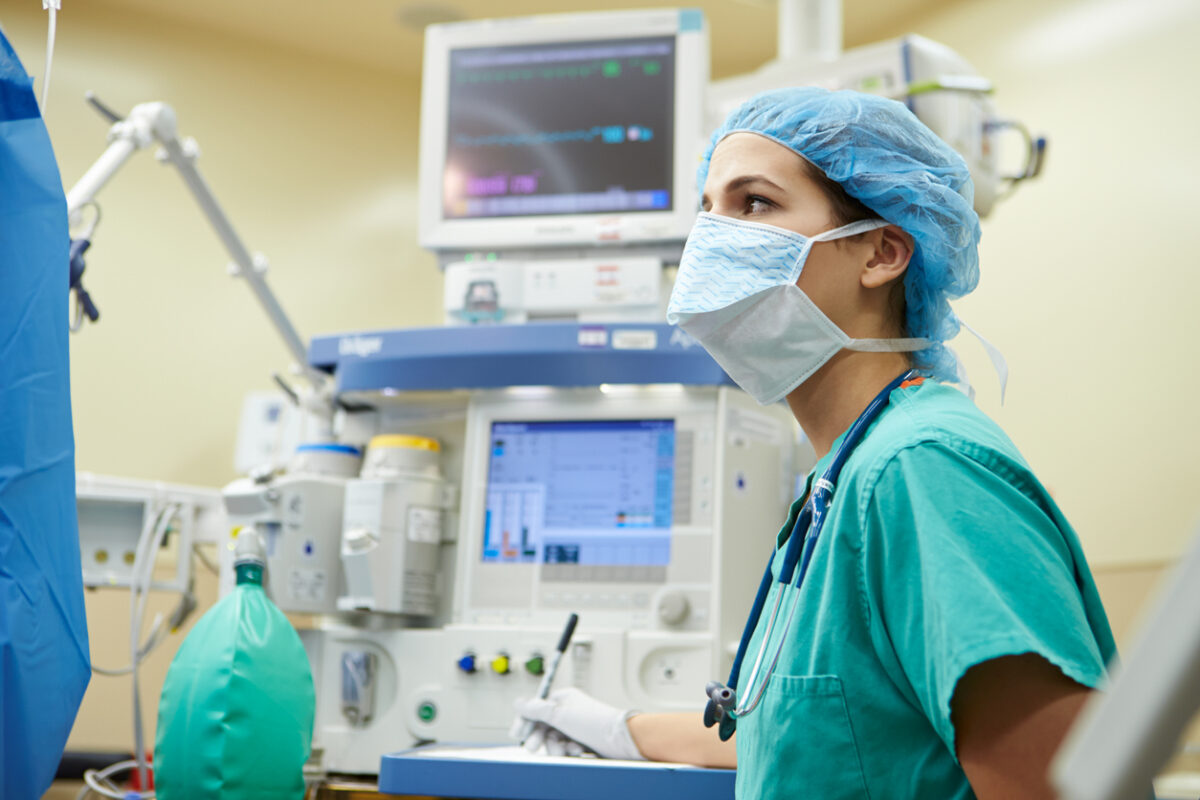Technological Advances in Anesthesiology

Improvements in perioperative technology allow the automatic and reliable collection, storage, and presentation of patient data during the perioperative period. The combination of immediate feedback and extensive details on a patient’s medical history allows the anesthesia community to focus on the patient in a timely matter. Anesthesia technology advancements are improving patient care. Developments that have become available in recent years include progress in software, such as in anesthesia information management and clinical decision support systems (AIMS and CDSS systems).
The increasing use of AIMS and CDSS systems across anesthesia departments and practices has enabled the establishment and growth of large data sets describing anesthesia patients, procedures, and outcomes. These data sets present a potential, prediction, decision, support, and ultimately allow data transmission to quickly integrate information directly from the monitors in real-time and provide vital information to the anesthesia specialist.[1,4]
Advancements in hardware in ultrasound machines for applications such as echocardiography, regional anesthesia, or central line placement are improving patient care as well. The current monitoring system using electroencephalographic depth of anesthesia monitoring focuses on a reliable separation of different hypnotic levels that range from “fully awake” to “(burst) suppression.” Prevention of too deep anesthesia may help to reduce delirious outcomes.[1] Lately, new approaches to clinical airway management such as airway algorithms, video laryngoscopy, and advanced supraglottic airway devices are also protecting patients from injury.[2] Video laryngoscopy offers the advantage of improved glottic visualization and a higher first-attempt endotracheal intubation success rate in both predicted and unexpectedly difficult airways. Its use also is associated with a high success rate of rescue intubation while many supraglottic airway devices with specific designs for better ventilatory performance and higher patient safety have also been developed.
In the same manner, recent advances in noninvasive monitoring devices that track the patients’ vital signs are helping improve patient treatment. Fsmart pumps, computer-controlled drug infusion delivery, and noninvasive monitoring systems are just a few examples. A recent article by J. A. Galvez, MD Assistant Professor of Anesthesiology and Critical Care at the University of Pennsylvania and The Children’s Hospital of Philadelphia cite several noninvasive monitoring devices. For instance, a cloth sensor that is applied to a patient’s neck and employs acoustic signal processing to monitor the patient’s respiratory rate. It uses an acoustic sensor method that has been shown to be more precise than thoracic impedance and better tolerated than capnometry with a face mask in obese patients recovering from anesthesia.[3]
Another attractive class of devices is Zacceleromyographic (AMG) monitors. These devices measure the acceleration using a piezoelectric sensor attached to a freely moving thumb. These devices take advantage of the direct proportionality between acceleration and force to measure the evoked force of the thumb. A significant impediment to this type of monitoring is the fact that the piezoelectric sensor may not always be “properly aligned” to the optimal plane of the thumb movement.[1] Several other attractive noninvasive monitoring systems, smart pumps and computer-controlled drug infusion delivery, have been released and promoted in the anesthetics community and to the general public as accessible vital signs tracking systems. Integrated pulse oximeters, Smartphone electrocardiogram single-lead devices, and applications for at-home screening for intermittent hypoxia in children are also now available. [5]
[1] John Doyle et al. Advances in anesthesia technology are improving patient care, but many challenges remain BMC Anesthesiology (2018)
[2] Cooper RM. The use of an endotracheal ventilation catheter in the management of difficult extubations. Can J Anaesth. 1996 Jan;43(1):90–3
[3] “Current and Emerging Technology In Anesthesia” Anesthesia Expert August 24, 2015 https://anesthesiaexperts.com/uncategorized/current-emerging-technology-anesthesia/Current and Emerging Technology In Anesthesia
[4] Dutton RP. Quality management and registries.Anesthesiol Clin. 2014;32(2):577–586.
[5] Nair, B.G., Gabel, E., Hofer, I., Schwid, H.A. and Cannesson, M. (2017). Intraoperative Clinical Decision Support for Anesthesia: A Narrative Review of Available Systems. Anesthesia and analgesia, [online] 124(2), pp.603–617. Available at: https://www.ncbi.nlm.nih.gov/pubmed/28099325.
